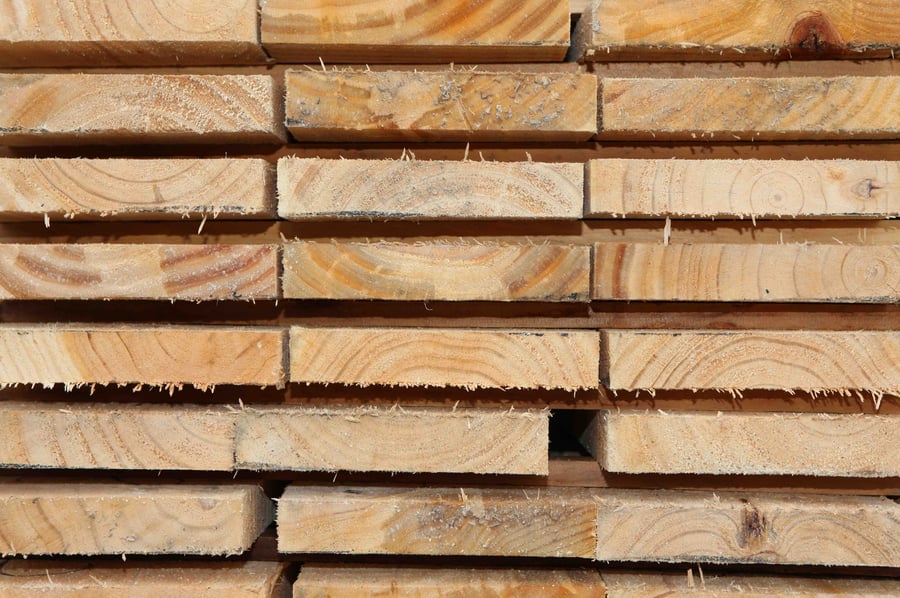Pin or Pinless Moisture Meters: Which Kind is Best for You?
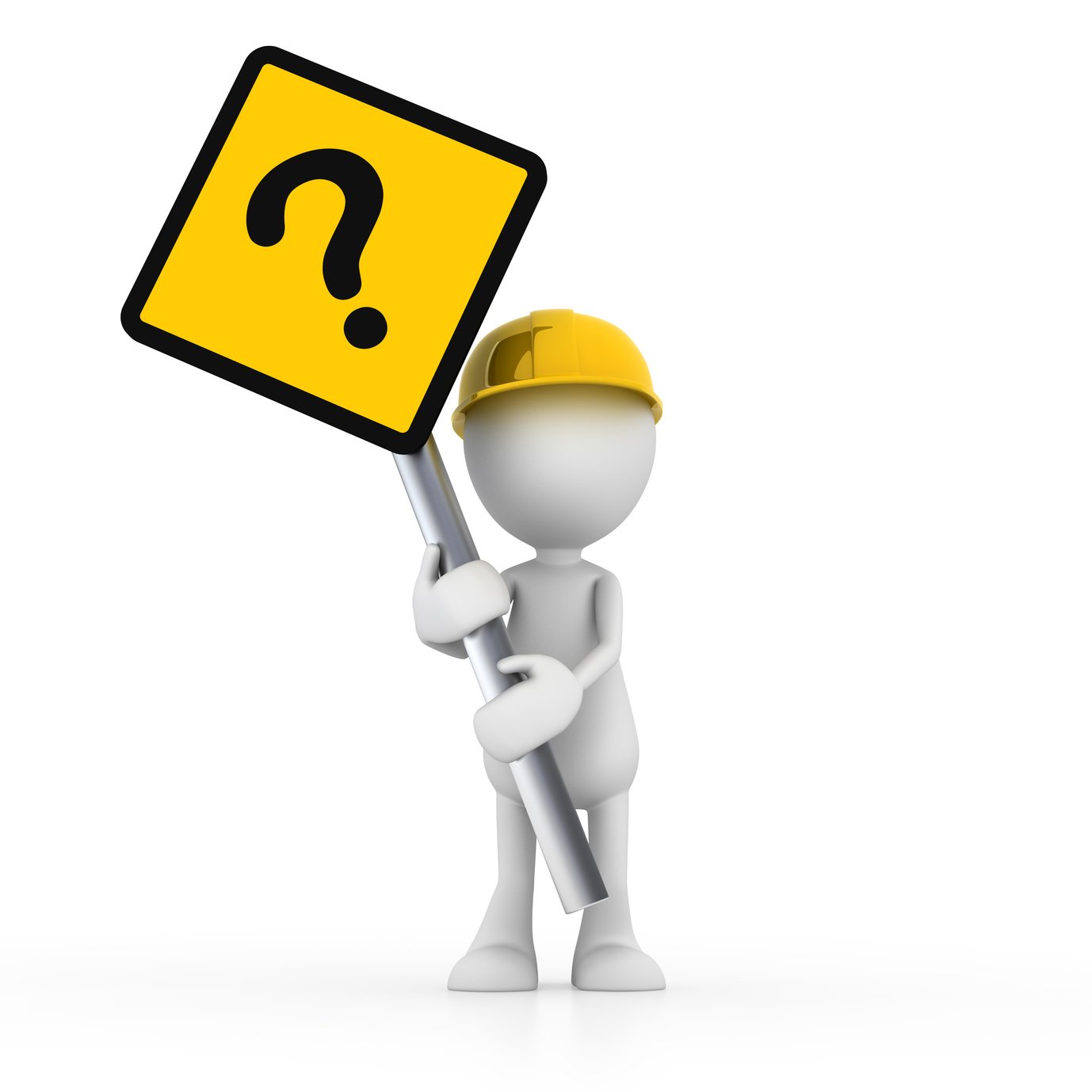
For many professionals, measuring moisture in various materials is an everyday part of the job. From wood, to concrete, to drywall, to hay and even soil, the materials that are tested with moisture meters are numerous. To these professionals, picking the right moisture measuring tool for the job is a key part in getting the job done right.
The two primary types of moisture meters are pin-type meters, which use two or more contact pins to penetrate a material to get a reading, and pinless meters, which use electromagnetic waves to take moisture readings without invasive pin penetration.
The question is, which kind of moisture meter is right for your work? To answer this, we’ll take a look at some examples of jobs where moisture meters are important, and the usefulness of these two types of moisture meters in each.
Woodworking
As a category, woodworking is actually pretty broad. However, anyone who works with wood on a regular basis knows the importance of making sure that their lumber has the right moisture content. Excess moisture in wood can cause major problems, such as warping and other deformities, rot, and worse.
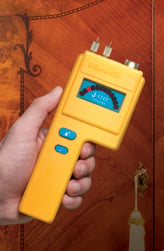 For wood, both pinless and pin-type moisture meters have their uses. Pin-type meters, in particular, have the advantage of being able to tell you the depth at which a moisture pocket in wood occurs. To do this, simply push the pins in partially, take a reading, push them in a little more and take another reading, repeating until you hit the moisture pocket in the wood or reach the maximum penetration depth of the pins.
For wood, both pinless and pin-type moisture meters have their uses. Pin-type meters, in particular, have the advantage of being able to tell you the depth at which a moisture pocket in wood occurs. To do this, simply push the pins in partially, take a reading, push them in a little more and take another reading, repeating until you hit the moisture pocket in the wood or reach the maximum penetration depth of the pins.
The major drawback to using pin-type meters is that they can only measure the moisture content of the material between the pins, so if a moisture pocket falls outside of that area, it can go undetected. However, this same focus is what allows pin meters to give users a precise location for moisture pockets and the depth at which they occur.
Pinless meters, on the other hand, are very good at scanning large areas of an object quickly. With these meters, there are no pins to constantly and carefully push in and out of the wood. Simply press the scanning plate against a flat piece of wood, push the button, and you have a moisture reading in seconds. This process can be repeated over different areas of a single piece of wood to give a thorough reading of the %MC of that piece of wood without leaving pin-holes in it.
There are, however, a few drawbacks to pinless meters:
-
A pinless meter requires a flat surface on which to press the scanning plate. Without such a flat surface, readings cannot be taken.
-
Pinless meters have a fixed scanning depth. If a piece of wood is too thick, the pinless meter will not be able to take a reading of the deepest layer of the wood. If the wood is too thin, you may actually get readings of the material behind that piece of wood, rather than for the wood itself.
-
Metal objects in piece of wood can cause a false positive. Pinless meters emit electromagnetic waves to scan a piece of wood, and use the distortions of returned waves to calculate the %MC of that wood. Foreign objects such as nails interfere with the electromagnetic waves emitted by the meter, creating a false positive reading.
When choosing a type of moisture meter for woodworking, take into account the size and shape of the wood you’re working with. For example, floorboards and other thin pieces of wood might not be thick enough to get reliable readings from a pinless meter, whereas big lengths of lumber would be perfect for pinless moisture meters.
Hay, Straw, and other Baled Goods
Farmers harvesting hay or straw have a very important reason to make sure the moisture content of their bales is within the right range: wet bales can combust, causing explosions that can ruin everything in the silo.
Here, the choice of moisture meter type to use is fairly obvious: pin-type meters, specifically ones with extended-length probe attachments. Why? A bale does not have a flat, solid surface for a pinless meter to take a reading on, and they are usually several feet thick, well beyond the scanning depth of a pinless meter in any case.
Restoration Work
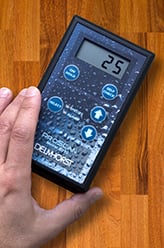 When checking building materials to make sure that dry-out processes are complete and that there are no more moisture-related hazards, having access to the right moisture meter is a must.
When checking building materials to make sure that dry-out processes are complete and that there are no more moisture-related hazards, having access to the right moisture meter is a must.
Here, it’s important to be able to both cover large areas quickly to find pockets of moisture, and be able to pinpoint the exact depth at which these pockets of moisture occur. For this reason, most restoration experts carry both pin and pinless meter while on the job. Alternatively, they can use two in-one meters to get the benefits of both types of moisture meters in a single device.
Poured Concrete
Actually, neither of the two types of meters we’ve been discussing up to now are ideal for use in monitoring poured concrete. To monitor the moisture conditions inside a concrete slab (and adhere to ASTM-F-2170 standards), you need a thermo-hygrometer with in-situ probes.
Using in-situ probes gives contractors the information that they need to predict how a slab will “behave” over the next few days, and whether or not that slab is ready to be built upon.
Get the Right Tool for the Job
Whether you need to measure moisture in solid objects or in loosely-packed materials such as insulation, make sure that you’re getting the right tool for the job by talking it over with an expert from a trusted manufacturer of moisture measuring devices now!
Subscribe to Our Blog
Post Related
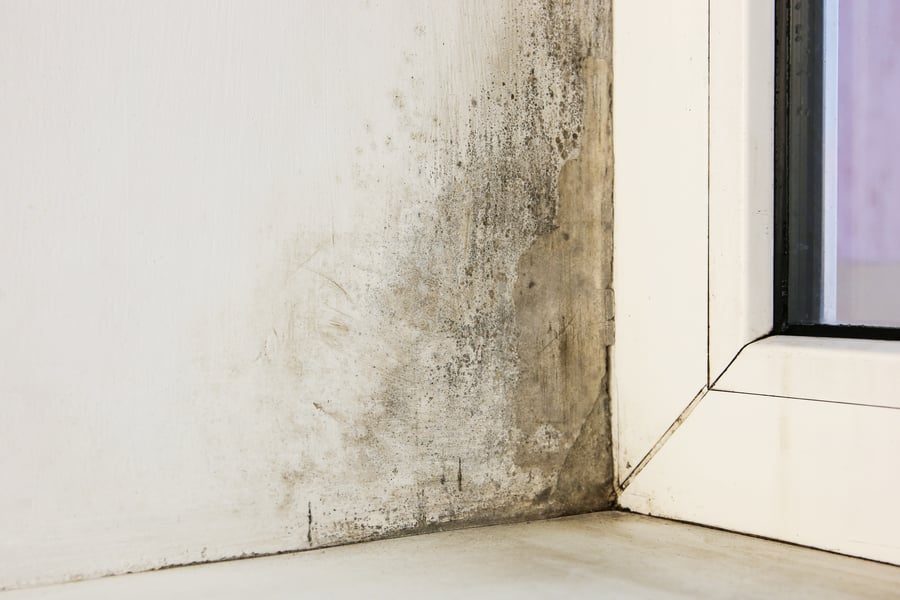
Pin or Pinless Moisture Meters: Choosing the Right Meter for the Job

